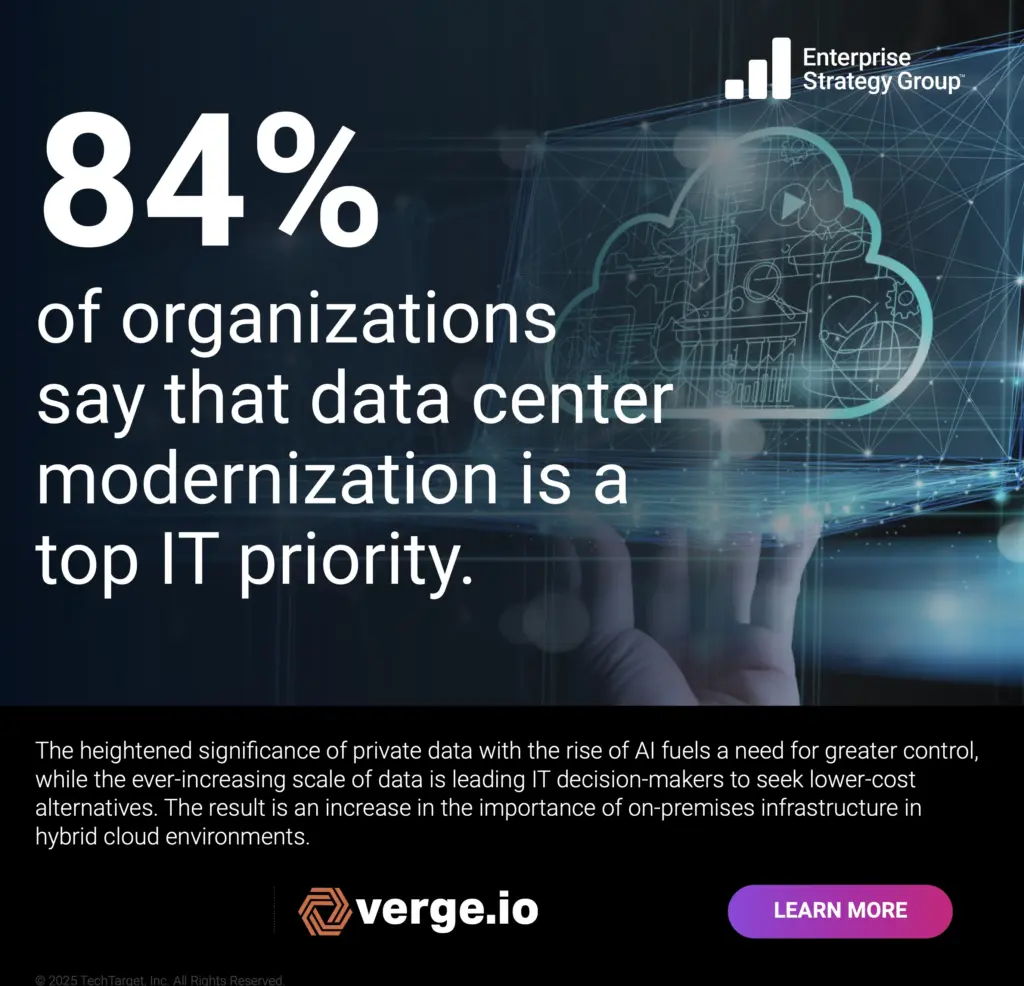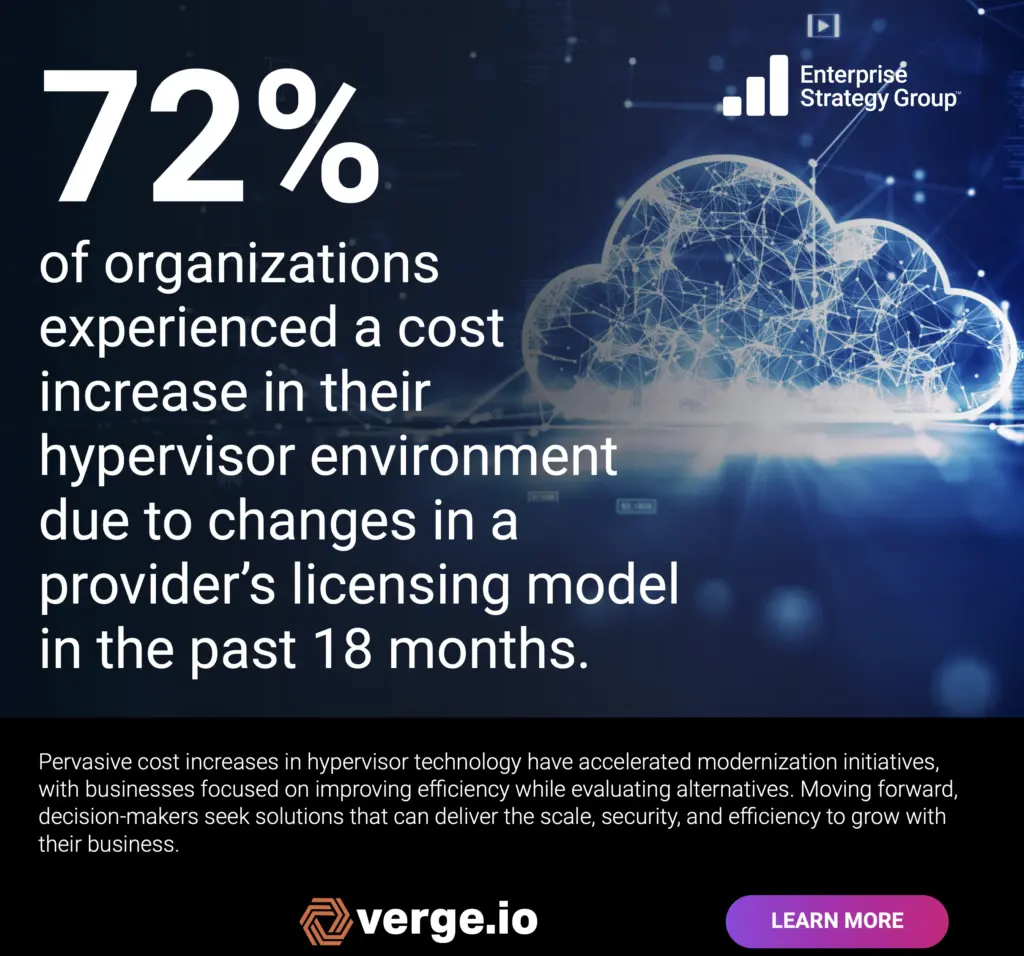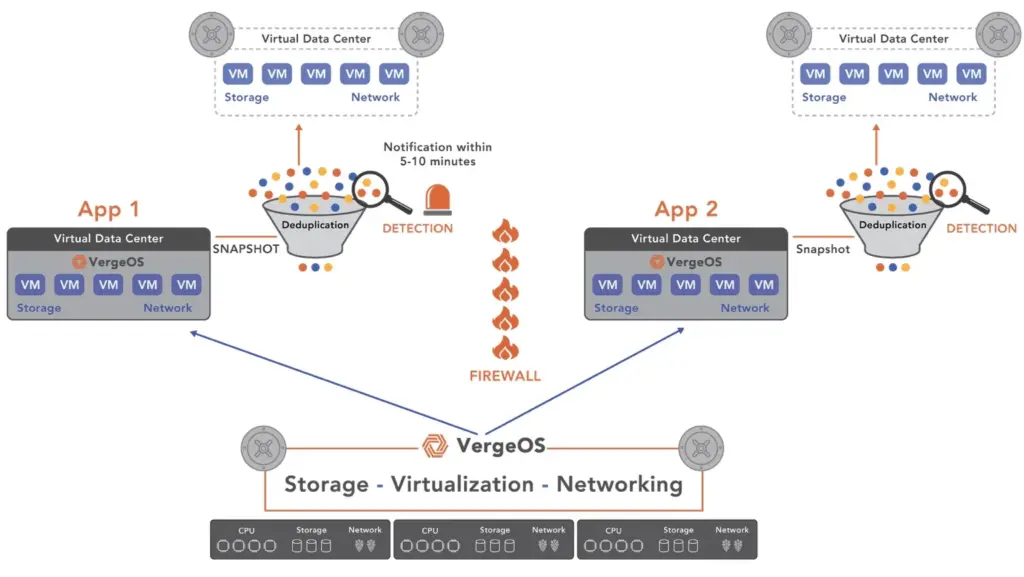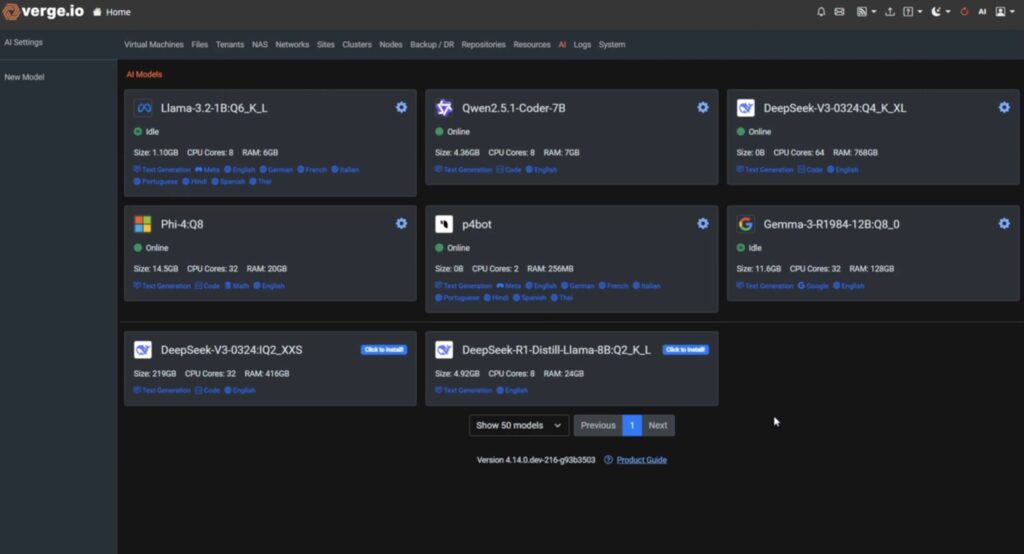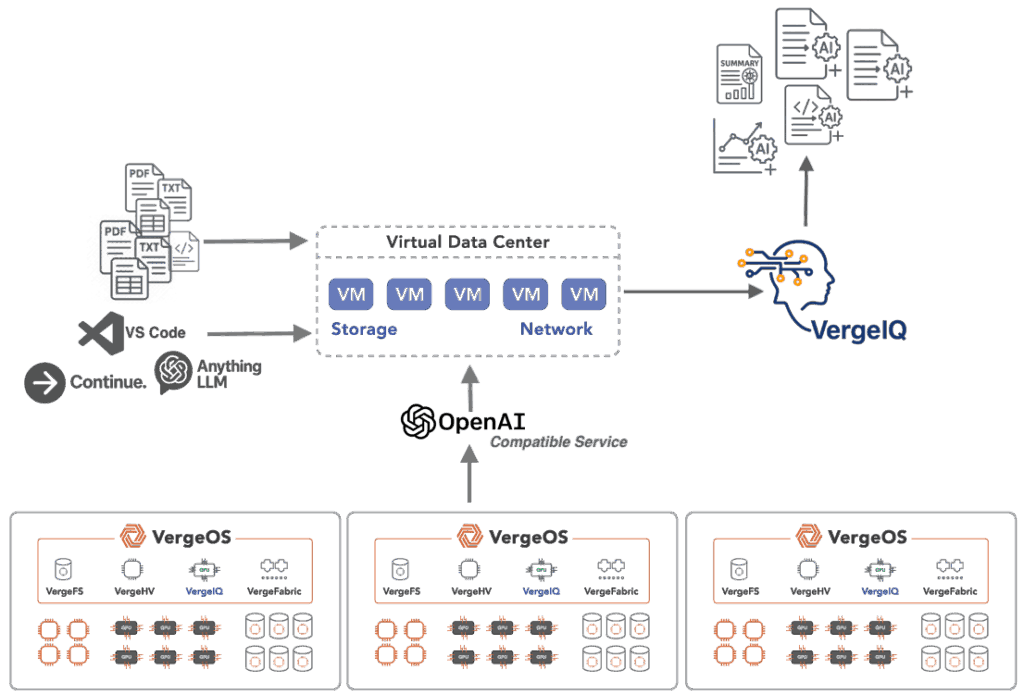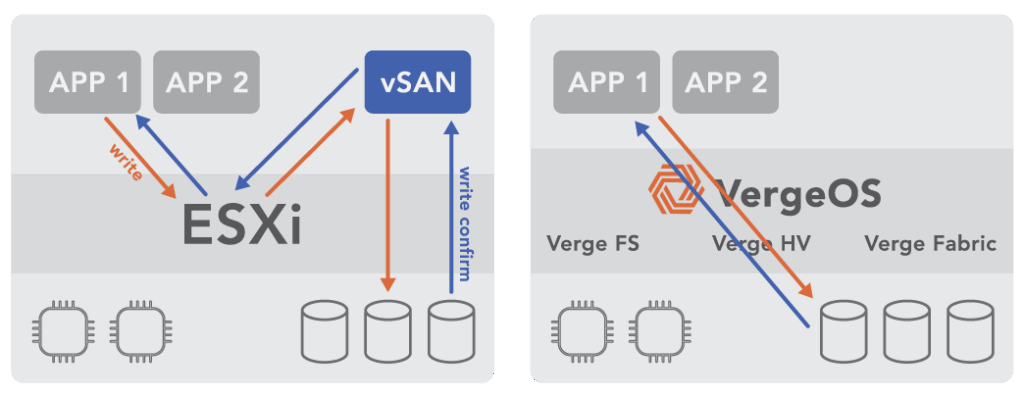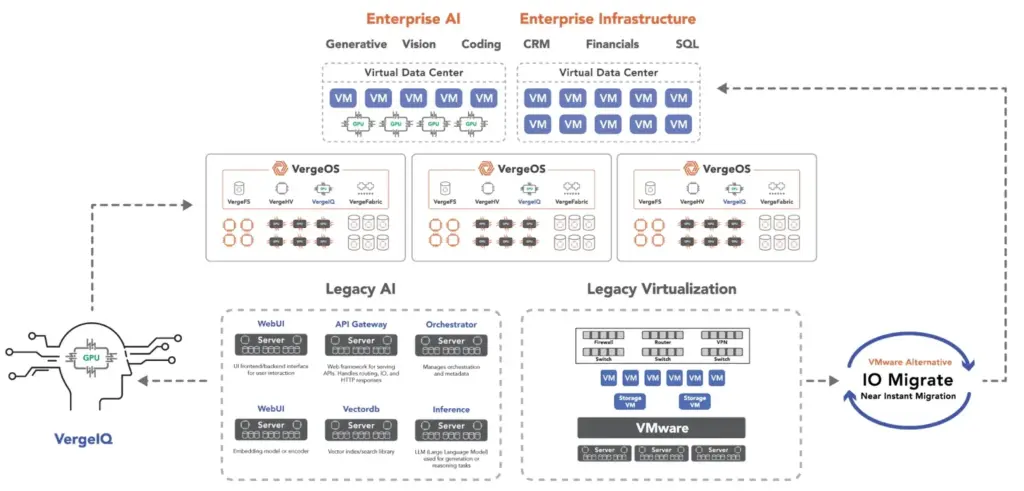
VMware’s pricing changes, cloud cost overruns, or the AI skills shortage are symptoms of the infrastructure problem: legacy environments that demand new layers of complexity with every new initiative. Each shift in strategy—whether it’s migrating to the cloud, deploying AI workloads, or navigating vendor transitions—exposes just how fragile and fragmented traditional architectures have become. IT teams are forced to bolt on new platforms, hire niche expertise, or overprovision resources just to keep up. The result isn’t innovation—it’s operational drag. It’s time to rethink infrastructure from the ground up.

According to recent (May 2025) ESG research titled “Private AI, Virtualization, and Cloud: Transforming the Future of Infrastructure Modernization,” a survey of 380 mid-sized to large data centers, organizations everywhere are scrambling to address these top challenges:
- VMware’s acquisition by Broadcom has created uncertainty for the 80% of enterprises relying on their virtualization platform.
- Simultaneously, 75% of organizations are rethinking their cloud strategies as costs spiral beyond projections.
- And 53% of organizations plan to deploy private, on-premises AI infrastructure within the next two years, but 70% struggle to find qualified staff to manage increasingly complex infrastructure environments.
IT leaders are approaching these as separate crises requiring individual solutions. But what if there’s a single root cause driving all these problems?
The Symptoms of the Infrastructure Problem

The evidence of the infrastructure problem is everywhere:
- VMware’s disruption has left organizations hunting for hypervisor alternatives, only to discover that most options require new skill sets and architectural approaches.
- Cloud repatriation is accelerating as the economics of long-term workloads in public cloud environments prove unsustainable—what promised operational flexibility has become a financial burden.
- AI adoption is stalling because implementing on-premises AI is a must-have to mine proprietary data, but vendors are suggesting it requires building separate infrastructure stacks with specialized hardware, networking, and storage.
- Talent acquisition has become nearly impossible as the complexity of managing modern infrastructure outpaces the available skill pool.
These issues dominate IT planning discussions, budget meetings, and strategic reviews. However, focusing on symptoms instead of causes leads to fragmented solutions that exacerbate the underlying problem.
Software is the Source of the Infrastructure Problem
The source of the infrastructure problem isn’t any single vendor, technology, or market force. It’s the acceptance of fundamentally flawed infrastructure software that forces fragmentation by design.
For over two decades, the industry has normalized building data centers by assembling disconnected components—hypervisors that require separate storage systems, networking hardware that needs additional security appliances, backup solutions that demand their own management consoles, and now AI platforms that require new and again isolated stacks.
This fragmented approach creates four compounding problems:
Hardware Vendor Lock-In: Traditional infrastructure software ties organizations to proprietary hardware ecosystems. Storage controllers costing 10X what they should, certified network switches, rigid hardware compatibility lists—all designed to extract maximum revenue rather than deliver maximum value.
Operational Silos: Every new initiative spawns its own infrastructure requirements. Virtualization teams, storage specialists, network engineers, backup administrators, and now AI infrastructure experts—each managing separate tools, consoles, and technologies that barely communicate with each other.
The Add-On Trap: Poor infrastructure software creates gaps that must be filled with additional vendor solutions. What starts as “adding backup capabilities” becomes an ecosystem of interconnected products, each requiring its own licensing, hardware, support contracts, and specialized expertise.

Complexity Explosion: The staffing crisis isn’t just about finding qualified people—it’s about the exponential complexity created when organizations need specialists for every infrastructure domain, plus the integration expertise to make them work together.
How to Solve the Infrastructure Problem
Solving the infrastructure problem becomes possible when infrastructure software is designed correctly from the ground up. VergeOS demonstrates this approach by integrating virtualization, storage, networking, and AI capabilities into a single codebase, creating a unified platform.

Instead of assembling separate components, organizations get unified functionality that eliminates vendor lock-in, operational silos, add-on complexity, and excessive staffing requirements while leveraging existing hardware. A single platform addresses what organizations currently treat as separate problems: VMware alternatives, cloud cost optimization, AI infrastructure deployment, and skills shortage mitigation.
This isn’t theoretical—it’s happening today. Read our case studies to learn how organizations using VergeOS report reducing infrastructure costs, in some cases, by over 90%, eliminating multiple vendor relationships, and enabling single administrators to manage entire infrastructure stacks that previously required specialized teams.
The Path Forward
The infrastructure challenges consuming your planning cycles aren’t inevitable. They’re the predictable result of accepting software that forces fragmentation rather than enabling consolidation.
VMware disruption, cloud cost overruns, AI deployment complexity, and skills shortages are symptoms of a deeper architectural problem. Addressing symptoms individually—such as finding new hypervisors, optimizing cloud spend, building AI infrastructure, and hiring more specialists—treats the effects while leaving the cause untouched.
The solution requires recognizing that modern infrastructure demands modern architecture. Software that natively integrates all infrastructure functions. Platforms that work with commodity hardware rather than forcing proprietary purchases. Systems that simplify rather than complicate operations.
Organizations that recognize this shift now will gain significant advantages over those that focus on treating symptoms instead of addressing the underlying problem.
To learn more, download our white paper, “Four Forces Accelerating Infrastructure Modernization.”
